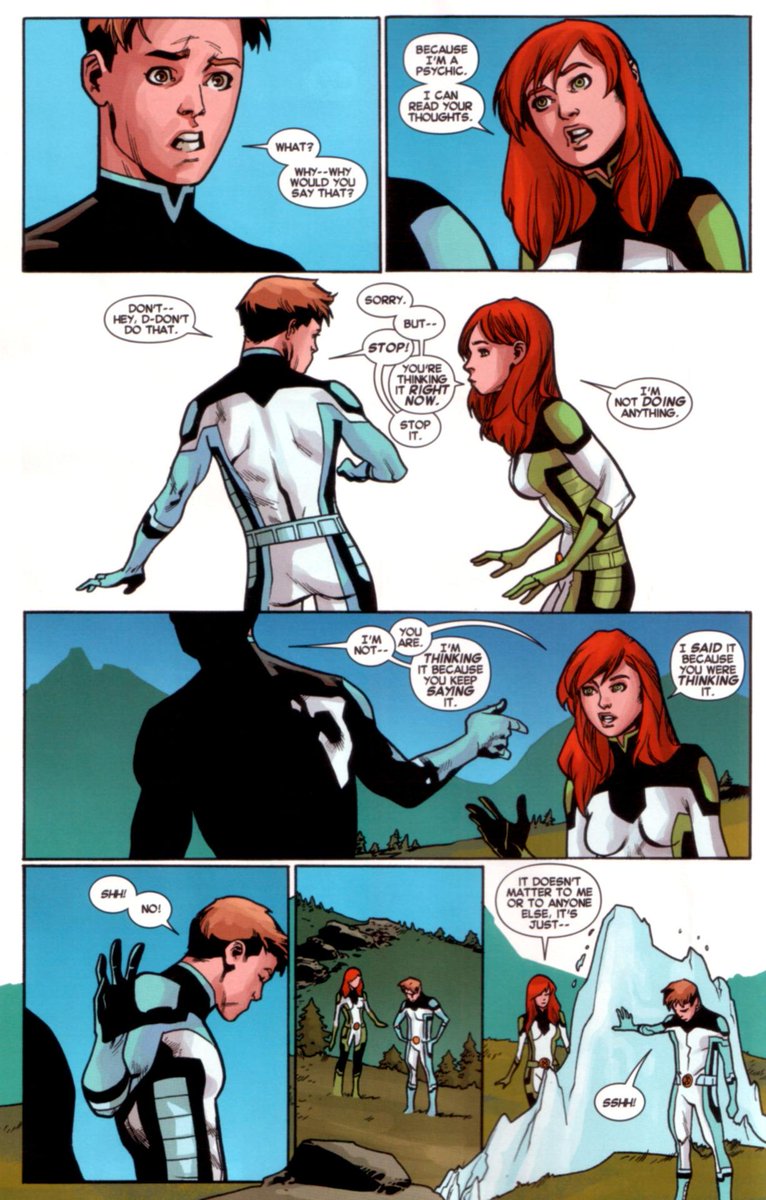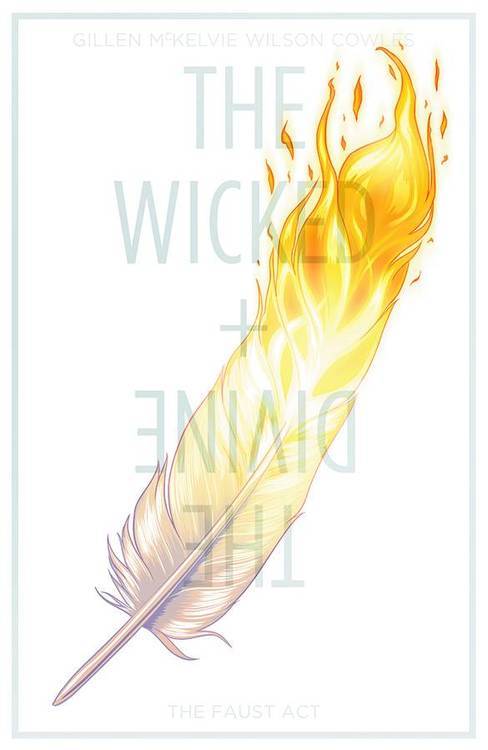Welcome back to part three in our series exploring the line-up for the upcoming Suicide Squad film. The movie may have only just started filming, but director Dvid Ayer has released a series of cast photos that have already caused a lot of noise online. Besides an ongoing debate over the Joker’s new look, most of it was focussed on the fact that the vast majority of these characters are completely unknown. To that end, we’ve put together a series of articles covering the line up as seen in the large cast photograph. Part One covered Slipknot, Captain Boomerang, and the Enchantress. Pat Two looked at Katana, Rick Flag and Harley Quinn. In Part Three, we’re covering Deadshot, Killer Croc, and El Diablo.

Deadshot
 Another character who’s more antihero than full-on supervillain, Deadshot is a long time rival, and foe, to DC’s Batman. Often working as a hired assassin, Deadshot’s tagline is that he will ‘never miss’ a target. A highly capable marksman, Deadshot’s favourite weapons are a set of silenced, wrist-mounted guns. His prowess are enhanced by a cybernetic eye which enhances his accuracy and provides data on targets direct to his brain.
Another character who’s more antihero than full-on supervillain, Deadshot is a long time rival, and foe, to DC’s Batman. Often working as a hired assassin, Deadshot’s tagline is that he will ‘never miss’ a target. A highly capable marksman, Deadshot’s favourite weapons are a set of silenced, wrist-mounted guns. His prowess are enhanced by a cybernetic eye which enhances his accuracy and provides data on targets direct to his brain.
Deadshot has been a major player in the last two incarnations of the Suicide Squad, bringing both his skills as a marksman and his disregard for human life to the table. Well, when the team’s objectives revolve around taking out dangerous targets, a boomerang isn’t really going to cut it, right? One of Deadshot’s defining traits is his desire to die in a spectacular fashion. This desire is a key reason for his joining the team in the first place. With no reason to continue living, and an aversion to suicide, he simply does not care if he dies. Various reasons have been cited for this, but the most common thread in them is his parents’ abusive relationship.

Will Smith as Deadshot
Will Smith, cast to play Deadshot in Suicide Squad, is inarguably the biggest name on the cast list. The casting also strikes a chord for diversity, as the original comic book character is caucasian. The necessity of this change is questionable, considering that the team is already pretty diverse, including Katana (Japanese) and El Diablo (Mexican American) and double the number of female members of both Justice League and The Avengers. Of course, it worked for Marvel’s film franchise.
Deadshot should also not be confused with Deathstroke, another Batman villain and weapons master. Although both characters have their connections to the team, I personally question the idea of having characters with such similar names on the same team. It’s just confusing. He’s also entirely different from Marvel’s Deapool, who was created as a parody of Deathstroke. Yeah.
Killer Croc

Killer Croc, by Francesco Mattina
Another character drafted in from the Batman comic books, Waylon Jones was born with a form of atavism, leaving him with distinctive reptilian traits. Raised by an alcoholic aunt who hated his hideous appearance and brutal behavior, Waylon was the victim of physical anmd emotional abuse until he finally killed his aunt and became a criminal. Like many of Batman’s villains, Killer Croc’s original motivation was to be the new kingpin of crime in Gotham. After killing his way through half of the city’s underworld, Killer Croc was finally defeated by Batman.
Aesthetcially, Croc’s appearance has varied wildly since his introduction. The character originally appeared as a powerfully-built man covered entirely in green scales, but with normal facial proportions and build. Various subsequent adaptations have featured tails, claws, elongated jawlines, and colour-schemes ranging from green to brown to grey. Since DC’s, line-wide reboot, The New 52, Killer Croc has been shown with an actual crocodile’s head, a change which has yet to be explained. Fortunately, the film appears to have given the character a much more toned-down appearance, with reptilian skin and no tail.
Killer Croc is another character who has nothing to do with the Suicide Squad in the DC comic books. However, his extreme violence and ruthlessness fits perfectly with the team’s goals and structure. It’s easy to see the serial-killer coerced into joining the team, if only to get out early from one of his many, many life sentences.
Adewale Akinnuoye-Agbaje as Killer Croc
El Diablo
 Like Rick Flag, there have been several incarnations of El Diablo in DC comics. The original was a bank teller named Lazarus Lane in the Wild West who was left in a coma after being struck by lightning. After being revived by a Native American shaman, Lane became possessed by a demon which would emerge whenever he fell asleep. Despite all this mystical stuff floating around, Lane actually had no superpowers other than increased stamina. However, he was proficient in the use of several weapons, notably his bullwhip, bolas, and guns.
Like Rick Flag, there have been several incarnations of El Diablo in DC comics. The original was a bank teller named Lazarus Lane in the Wild West who was left in a coma after being struck by lightning. After being revived by a Native American shaman, Lane became possessed by a demon which would emerge whenever he fell asleep. Despite all this mystical stuff floating around, Lane actually had no superpowers other than increased stamina. However, he was proficient in the use of several weapons, notably his bullwhip, bolas, and guns.
Like the vast majority of characters, El Diablo was reinvented for DC’s New 52. The new El Diablo, and the only one to be a member of the Suicide Squad, is a Mexican criminal named Chato Santana who met Lazarus Lane after being hospitalised by the police. Santana is given the powers of a minor vengeance demon by Lane, who was in a living coma and died after the transfer. Unlike Lane, Santana combines his weapons mastery with various forms of heat control and fire manipulation.
As the film’s incarnation is portrayed by Jay Hernandez, an actor of Mexican American descent, and because the Santana version of the character is the only one to be a member of the team in the books, this is the most likely iteration of the character to appear in the film.
Jay Hernandez as El Diablo
 Because everybody loves a samurai.
Because everybody loves a samurai. Another tricky one to place as the DC universe features not one, not two, but three Rick Flags, each the son of the one before. The first two Flags were both members of the Suicide Squad at various times. However, as the first Rick Flag was a World War II veteran, it’s unlikely that he’ll feature in this film. Unless DC want to rip off Captain America completely, of course.
Another tricky one to place as the DC universe features not one, not two, but three Rick Flags, each the son of the one before. The first two Flags were both members of the Suicide Squad at various times. However, as the first Rick Flag was a World War II veteran, it’s unlikely that he’ll feature in this film. Unless DC want to rip off Captain America completely, of course. command, particularly the murderous Deadshot. Already reluctant to take on the role, Rick quickly began to show signs of mental instability. Which is what happens when you spend all day around someone who calls himself ‘Captain Boomerang,’ I guess.
command, particularly the murderous Deadshot. Already reluctant to take on the role, Rick quickly began to show signs of mental instability. Which is what happens when you spend all day around someone who calls himself ‘Captain Boomerang,’ I guess. Harley is probably the most famous (or at least, infamous) character in Suicide Squad other than the Joker. The character stands out not only because she is one of the few female supervillains to have her own on-going title, but also because she started out as a tv character in Batman: The Annimated Series. Harley is also one of the youngest characters to appear in the film, making her debut in 1992. Dr. Harleen Frances Quinzell, was originally a psychiatrist at Arkham Asylum, where she fell in love with the Joker and becomes his accomplice and on-off sidekick. Honestly, the state of the medical profession these days. In the comics, Harley Quinn alternates between being a strong, independent villain in her own right and being the Joker’s girlfriend-cum-punching bag. In some versions, simply being around the Joker appears to have been enough to drive her dotty. In others, the Joker intentionally exposes her to the same insanity-inducing compound that bleached his skin and drove him mad. And my most recent first date was just dinner at a restaurant…
Harley is probably the most famous (or at least, infamous) character in Suicide Squad other than the Joker. The character stands out not only because she is one of the few female supervillains to have her own on-going title, but also because she started out as a tv character in Batman: The Annimated Series. Harley is also one of the youngest characters to appear in the film, making her debut in 1992. Dr. Harleen Frances Quinzell, was originally a psychiatrist at Arkham Asylum, where she fell in love with the Joker and becomes his accomplice and on-off sidekick. Honestly, the state of the medical profession these days. In the comics, Harley Quinn alternates between being a strong, independent villain in her own right and being the Joker’s girlfriend-cum-punching bag. In some versions, simply being around the Joker appears to have been enough to drive her dotty. In others, the Joker intentionally exposes her to the same insanity-inducing compound that bleached his skin and drove him mad. And my most recent first date was just dinner at a restaurant…

 This? Oh, this is just the Joker casually beating a teenage hero to death with a crowbar. No big deal.
This? Oh, this is just the Joker casually beating a teenage hero to death with a crowbar. No big deal.










